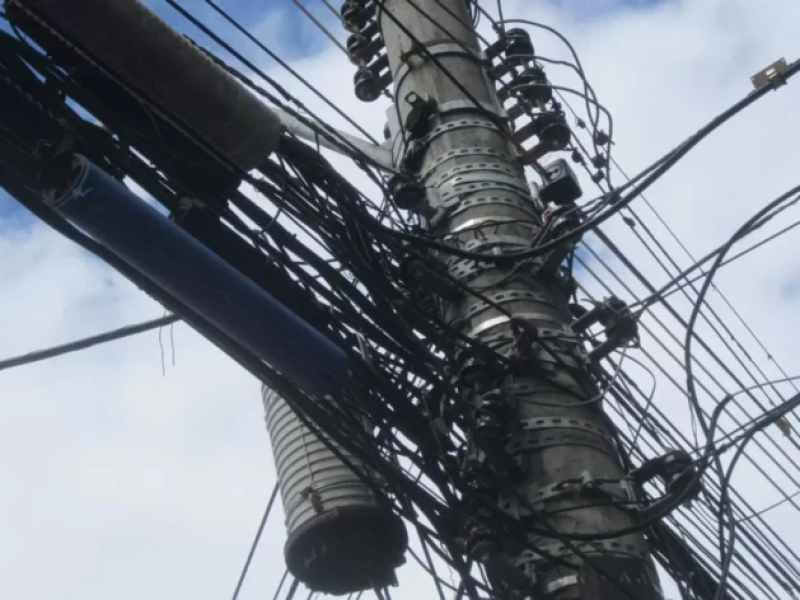- Record 676 Million Women Exposed to Deadly Conflicts |
- UN Renews Push for Global Elimination of Nuclear Arms |
- Don't leave healthcare to profit-driven actors: Prof Yunus |
- Key issues that Prof Yunus may raise in UNGA speech Friday |
- Israeli Strikes Intensify Gaza City Crisis, Casualties Rise |
Brazil Faces Power Risks From Rapid Growth of Renewables

The complexity of the Brazilian electricity system has evolved from a model based on hydroelectricity supplemented by thermoelectricity to a combination of diverse sources, without planning and with little control, whose excess intermittent generation threatens to cause blackouts.
Wind and solar power sources, essential for the energy transition to mitigate the climate crisis, have become a risk factor for power outages in Brazil.
It is a remedy that, in excess, becomes poison. The rapid and unplanned growth of these alternatives has created operational difficulties for the Brazilian electricity system, which is nationally interconnected.
“Brazil has one of the most complex electricity systems in the world. No other country has such a diversity of sources,” said Luiz Barata.
A blackout on 15 August 2023, which affected 27% of the country’s supply, was a major wake-up call about insecurity. It began with the transmission of wind and solar power plants in the state of Ceará, in northeastern Brazil.
According to the National System Operator (ONS), excess generation almost triggered similar crises again in April and August of this year. The ONS is a private organisation that represents consumers and all sectors involved, coordinating and controlling supply nationwide.
A functional electrical system requires surpluses; energy must be available at all outlets for eventual consumption. But “too much excess causes problems,” said Luiz Barata, former director-general of the ONS and current president of the National Front of Energy Consumers.
The intermittent nature of wind and solar power, which have expanded most rapidly in the last decade, exacerbates risks due to their uncontrollable origin. This energy depends on natural conditions, on when there is wind and sun.
The challenge deepens with distributed generation, also known as decentralised generation, which turns consumers into producers of their own electricity through 3.8 million residential micro-plants or groups of small businesses.
This dispersed generation already exceeds 43 gigawatts of power, according to the National Electric Energy Agency (Aneel), the sector’s regulatory body.
It amounts to 18% of Brazil’s total generating capacity, dominated by solar photovoltaic power with a 95% share.
“In addition to being uncontrollable because it depends on the sun, distributed generation cannot be interrupted, as it is beyond the control of the ONS,” warned Barata, an electrical engineer.
When excess supply threatens the system, the ONS curtails some generating sources. Typically, the interruption affects wind and solar plants, which are farther from the areas of highest consumption.
The Northeast, favoured by strong winds and solar radiation, concentrates most renewable sources, while the highest electricity demand is in the Southeast, Brazil’s most populous and industrialised region.
Operational problems are expected to worsen because distributed generation continues to expand, driven by legal incentives and individual decisions rather than planning.
From January to August 2025, the ONS curtailed 17.2% of the country’s potential wind and solar generation, equivalent to 7% of monthly consumption. This tripled the cuts compared with the same period in 2024, according to an analysis by Volt Robotics, an energy consulting firm.
In August, 57% of new renewable generation was curtailed due to excess supply.
“Brazil has one of the most complex electricity systems in the world. No other country has the diversity of sources that we have,” Barata told IPS from Brasília.
Of 236 gigawatts of installed capacity at the end of 2024, hydroelectricity still accounts for the largest share at 46.5%, according to the state-owned Energy Research Company. But its dominance has declined sharply from 89% in 2000.
By 2024, solar energy (20.5%), wind energy (12.5%), and thermal energy (18.6%), which consumes fossil fuels and biomass, together surpassed hydroelectricity — and are expected to keep growing.
Barata noted that the electricity matrix has shifted from hydrothermal, essentially hydro supplemented by thermal power plants, to a growing incorporation of new renewable sources, given their lower implementation costs and expansion of distributed generation.
However, legislation and regulations have not kept pace, he argued, stressing that a comprehensive structural reform is necessary to reduce risks and restore better planning and operational conditions.
“It is a complex system that cannot be solved with simple measures,” he said.
Other experts agree that renewables are not the only problem. Transmission deficiencies and daily mismatches between production and demand add to the risks.
Solar peaks around noon, when consumption is low, and declines when demand rises in the evening. Wind farms generate mostly at night, when demand falls again.
This asynchrony, combined with rapid expansion, makes Brazil’s electricity system increasingly vulnerable.

